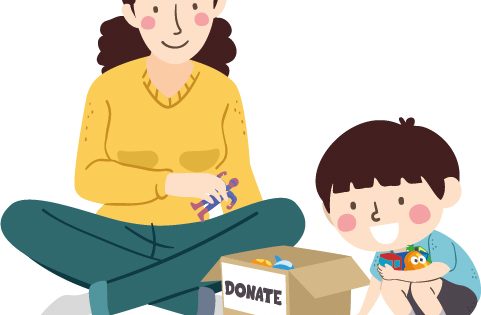Bullying is on the rise in Malaysia and is increasingly drawing media attention. Bullying is an aggressive behaviour that is intentional, hurtful and repeated. With bullying, there is an imbalance of strength, victims are harassed, taunted, rejected and assaulted by one or more individuals. Children who bully often want to have power over others.
Bullying can be categorised into two broad forms – direct and indirect. Direct or physical bullying involves physical contact: hitting, punching, threatening, slapping, pulling, pushing, or pinching to cause injury to the victim. Indirect bullying, although less easily spotted is no less damaging – affecting the victim in psychological and emotional ways including: verbal abuse, racial remarks, social exclusion and cyber bullying.
Why do children bully and what can we do, as parents to mentor our next generation to make better choices? If we find out that our child is bullying, the first step we must take is to acknowledge it and separate our child’s identity from their actions, in order to effectively address the situation.
“The heart of the matter, is the matter of the heart”
Bullying is ironically, the bully’s way of crying for help. The child could be trying to communicate hurt or trauma that they’ve experienced – for instance, not being able to cope with challenges with family at home, teachers at school, or in social circles. Bullying may be a defence mechanism, a fight for survival when the aggressor feels that they’re threatened, or encountering insecurity or peer pressure. Constant exposure to physical and verbal violence in child’s immediate environment is another risk factor.
“When we name it, we can to address it”
Essentially, as we mentor our next generation, we need to help them find ways to build emotional resilience, so that they find healthy ways to respond to life’s challenges. We can use short-term solutions with long-term goals to guide the process.
Short-term solutions are meant to address and manage the current situation and prevent further bullying quickly. It can be summed up to the S.H.O.R.T acronym below:
Speak to your child
As parents we can ask our child how they are feeling and take steps to help our child identify their root issues – common examples include: resentment or un-forgiveness, fear of losing someone important, insecurity of their identity, misinterpretation of beliefs and values.
Help your child
We can help them identify their emotions: is it anger, fear, sadness? Once we learn to recognize those feelings, it empowers and gives our children hope that there is a way to solve their problem. For example, if we come to a conclusion that a child has resorted to bullying because: “I am feeling sad, because, I felt rejected at school”; we as parents can work to reinforce the child’s identity and knowledge that they are loved, accepted and cared for.
Observe their behaviour
Pay close attention to their behaviours, are they exhibiting traits that are unusual? We can use this to start a conversation on how they are feeling.
Relationship Building
Build a relationship with our children that is based on trust and mutual respect. When we earn their trust, they will truly listen to us, because rules without a relationship lead to rebellion.
Time to be invested
Relationships require vested time and genuine interest in our children’s life. Spend quality time together as a family. Building trust with your children will allow them to come to us when they encounter issues and help to establish emotional stability.
Long Term Goals: Building Emotional Resilience and a Positive Family Culture
This requires investment in the development of our children to ensure that all aspects of their well-being – be it physical, cognitive, social, mental, moral, spiritual, and emotional are met, cared for and nurtured. These needs are the foundation in building resilience. When they learn compassion, empathy, character, patience it will not only benefit them in school, but also for the rest of their lives.
If we intentionally cultivate a positive culture at home that reflects love, respect, honour, integrity, children are more likely to practice it at school and in their circles of influence.
Ultimately our children look up to us to make good decisions in life. We must lay down the example so that they can examine their actions and learn from their mistakes. It’s up to us to be the positive role model that they can look up to, they can turn to for advice whenever they encounter challenges, and the ones that help them see that, bullying is never, an option.
About Generasi Gemilang
YAYASAN GENERASI GEMILANG (GG) is a foundation committed to building a strong nation by raising exemplary next-generation and strengthening families. We believe that Love transforms lives; therefore our work inspires hope in people and empowers them to live life to their fullest potential. These people are children, youth, families, schools, corporations and community at large.
Governed by a Board of Trustees, GG is based in the Klang Valley and conducts services throughout Malaysia. Formerly known as Persatuan Kebajikan Generasi Gemilang Kuala Lumpur dan Selangor, GG was incorporated as a foundation in December, 2014.








Comments